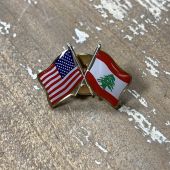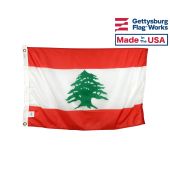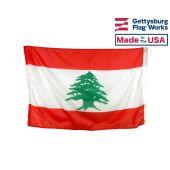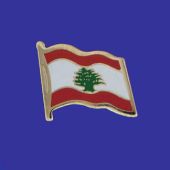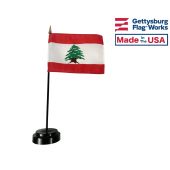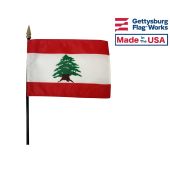Buy Lebanon Flags
Flag of Lebanon
The Lebanon flag is a rarity among the flags of the Middle East because it does not include any religious symbols. It instead focuses on symbols of the nation and its unique history. It follows in the footsteps of several relatively modern flags which had a significant influence on the current flag's design, but the nation of Lebanon can also lay claim to one of the oldest flags in recorded history.
- Capital of Lebanon: Beirut
- Area of Lebanon: 10,230 sq. km
- Languages used in Lebanon: Arabic (official), French, English, Armenian
- Religions in Lebanon: Muslim, Christian
Colors and Symbolism of the Lebanon Flag
The flag of Lebanon features of a Spanish fess that consists of two red stripes and a thick stripe of white. The white stripe contains a green depiction of the Lebanon Cedar tree, which is an ancient symbol of the region. The use of the cedar tree as a symbol of Lebanon dates back at least as far as the Bronze Age, and it can be seen in some of the oldest works of literature that have survived to the modern era. It represents peace and longevity in addition to its role as a symbol of Lebanon itself.
The flag's colors also have symbolic value. The red stripes on the Lebanon flag represent the blood that its people have shed in order to defend themselves and their freedom from foreign invaders. The white stripe represents snow on the Lebanese mountains, which is a traditional symbol of peace and purity within the nation.
History of the Flag of Lebanon
The first flag to be used in Lebanon was divided into equal portions of blue and red. It dates back to the early Bronze Age, when it was used by some of the Phoenician people. Lebanon has spent most of its time since the Phoenician period under foreign rule, and so it has often been represented by foreign flags. These include the flags of the Abbasid Caliphate, the Kingdom of Jerusalem, and a long sequence of emirates and sultanates.
The first modern flag of Lebanon came into use after the nation gained its independence from the Ottoman Empire. It was adopted in 1918 and it consisted of a white field with a green tree in the center. The tree emblem was placed on the French flag when Lebanon became part of the French Mandate in 1920, and the flag changed several times during the Mandate period. The modern flag came into use when the nation gained full independence in 1943, and it has not changed since it was first adopted.
